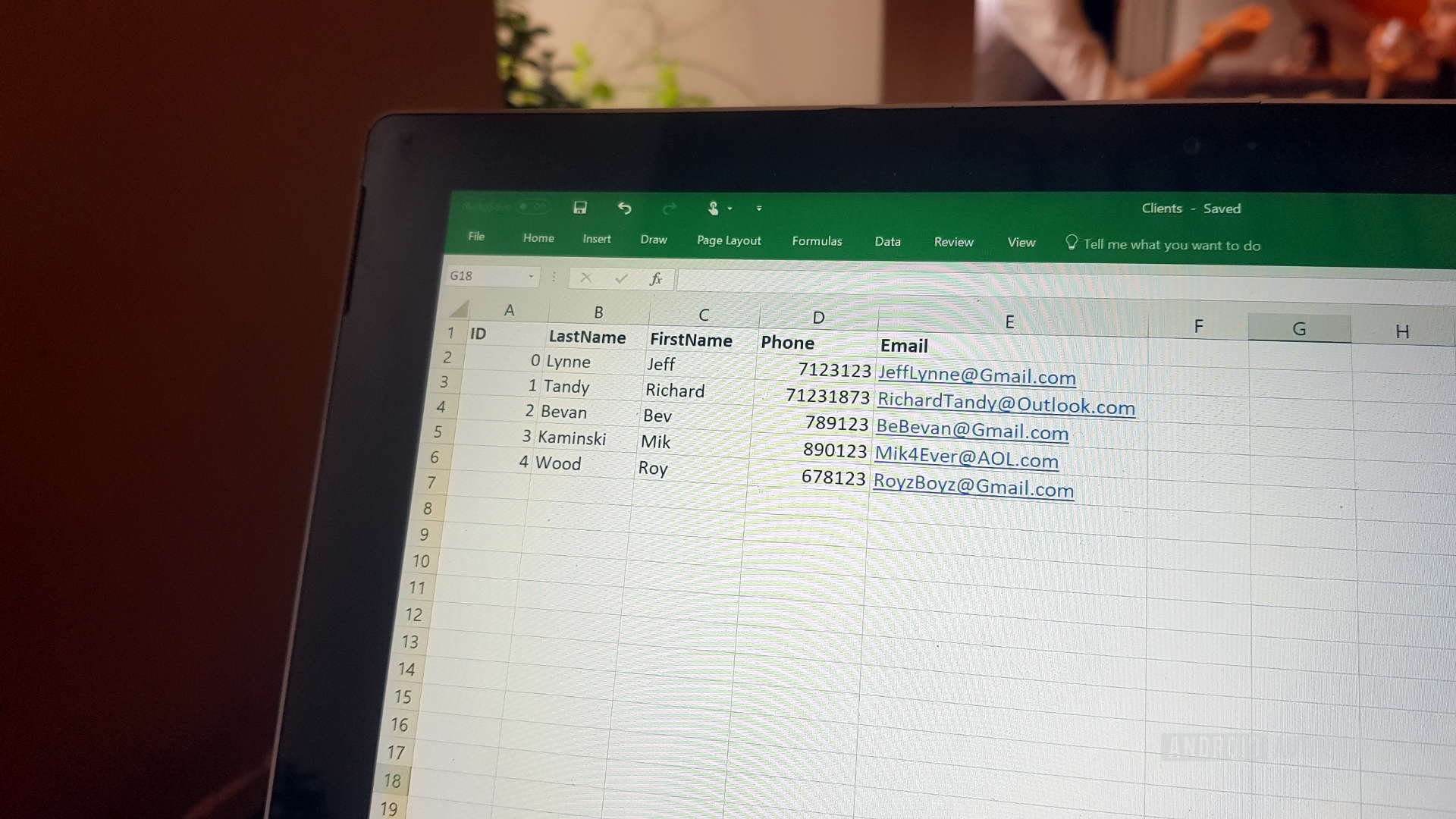Affiliate links on Android Authority may earn us a commission. Learn more.
How to become a data analyst and prepare for the algorithm-driven future
A data analyst manipulates data for a living. In an era where companies are becoming increasingly reliant on ever-expanding data sets, this is a more important skill than ever before. It’s also one in great demand.
One of the big driving factors in the future jobs market is going to be the Internet Of Things (IoT), which refers to all the devices in your home connected to the web. All those smart hubs, light bulbs, and fridges create gigantic amounts of data for companies to work with (for better or worse), and data analytics will play a huge role in this industry going forward, according to tech analysis firm Foote Partners.
If you’re looking for a future-proof line of work with great opportunities that you can potentially enjoy from home, becoming a data analyst might be right for you. Let’s take a look at the skills you need to learn, and how you can get started.
What does a data analyst do?
A data analyst is someone who draws “useful insights” from large data sets. That means translating numbers into plain English. They might create reports and visualizations to display this information, and to show useful correlations or trends. Companies can then use these in order to inform their decisions.
Data analysts might work within a single organization, or might take on numerous clients as part of an agency.

For marketing, a data analyst might be able to determine a large percentage of customers that bought X product were female psychology students. They may then recommend that the client targets that demographic more with future marketing. Alternatively, they might notice a trend showing more and more men are now becoming interested in the product. This is also something the business can capitalize on. They might further find this is a demographic the competition is currently not catering to.
A data analyst translates numbers into plain English
Another practical example comes from Forecastwatch.com, which gathers forecasts from thousands of different reports and compares that with actual human reports of what the weather was like. Using all this information, forecasters can then refine and improve their models.
Data sources and roles
These data sets can come from a number of different sources: sales statistics, loyalty cards, user accounts, customer feedback, apps and software, website traffic analytics, market research, laboratory studies, and more.
A large part of this work will involve creating reports, which will provide insights and trends that may be useful for management. Data analysts will also be required to get data to “talk” when grabbing it from multiple different sources. They may be required to remove faulty data (cleaning). They may even sometimes be asked to “massage” data to make it a little more amenable to the organization’s goals!

This can be an exciting and rewarding job, and you can help steer the direction of a company based on smart data-driven insights. However, it can also be a very dull line of work only a few steps removed from data entry. Looking after a single spreadsheet isn’t challenging or rewarding for most people. Your role will depend on the organization and your place within it.
What is the difference between a data analyst and data scientist?
One useful distinction to understand is the difference between a data scientist and a data analyst. The line can become a little blurred, but generally data scientists work more with machine learning and predictive modelling. They use data to make predictions about the future, and generally have stronger backgrounds in math, statistics, and computer coding.

Data scientists also work with AI and machine learning. Machine learning is essentially a larger, automated version of what a data analyst does, with algorithms that look for patterns in gigantic data sets, such that they can eventually learn to identify certain elements inside an image, to detect natural human language, or to make decisions about advertising. As a data scientist, you might write code in Python and SQL to help retrieve this data and put it to use.
Read more: Cloud AutoML Vision: Train your own machine learning model
The average salary for a data analyst is $64,975 per year according to Indeed.com, whereas the average salary for a data scientist is $120,730.
If you’re interested in becoming a data scientist, and working with cutting-edge machine learning algorithms, a great place to start is with the Machine Learning and Data Science Certification Bundle.
Skills, qualifications, and tools
While not essential, a degree in any of the following subjects can be useful for a data analyst:
- Mathematics
- Computer science
- Statistics
- Economics
- Business
A number of specific skills will also come in very handy and are certainly worth developing. Fortunately, the web now makes it easier than ever to gain these skills and certifications from home. Udemy provides useful courses for nearly every skill you could need as an analyst for under $20 in most cases. Here’s what’d be good to know.
Excel
It’s not glamorous, but many data analysts spend a lot of time on Excel, creating tables and elaborate equations. When going into an interview or applying for a short-term gig, you will likely be required to demonstrate advance Excel skills. So brush up!
Try the Udemy Course: Microsoft Excel – Excel From Beginner to Advanced.

SQL
SQL stands for Structure Query Language and is a declarative language for creating and retrieving data from a database. If you are trying to retrieve data from certain users of a website, chances are you will do this by talking to a database stored on a server using SQL. SQL looks daunting at first, but is easy enough to get your head around and can be immensely powerful once you do.
Try the Udemy Course: The Complete SQL Bootcamp.
Read more: A SQL primer for Android app developers
Google Analytics
Google Analytics analyzes the performance of websites and apps. It collects data about the number of visitors, where those visitors came from, which websites they went to and more. You can even track which visitors bought products and the pages they viewed first.
Try the Udemy course and become certified: Google Analytics Certification: Become Certified and Earn More.
Python
At the more advanced end, a data analyst or data scientist might need to learn some basic or even advance coding skills. These can be used to extract data more efficiently from different sources, to manipulate it in useful ways, or to present it in pretty visualizations for clients. Python is a particularly flexible and versatile language, which makes it a popular choice in data analytics.
Try: Learn Python Programming Masterclass from Udemy.
Apache Hadoop
Hadoop is a set of open source tools that that allows for the manipulation of large data sets distributed across multiple computers. This is useful for working with extremely large data sets that require multiple servers just to provide the storage capacity. Useful for more advanced data analysis and data science roles.
With a lot to get your head around, we recommend The Ultimate Hands-On Hadoop – Tame Your Big Data from Udemy.
Apache Spark
Spark is a cluster computing framework with a powerful API for writing fast programs in Java, Python, or a host of other languages. This more advanced tool will likely be used in conjunction with Hadoop.
From the same tutor as Hands-On Hadoop, Taming Big Data with Apache Spark and Python – Hands On!, is a great introduction.
Of course, there are different specific skills that might be required for particular roles, but you should be able to identify these when you start looking for jobs. Make sure to read the job spec carefully!
You could also try one of several comprehensive data analysis certifications, such as: The Certification of Professional Achievement in Data Sciences from Columbia University, or Certified Analytics Professional from INFORMS. Cloudera also offers a more affordable option: Cloudera Certified Associate (CCA) Data Analyst.
Is being a data analyst right for you?
If you like the idea of working with data, then yes! It’s a great choice for those that want a job that will likely only increase in demand over the coming years.
IoT and machine learning will play a huge role in shaping the future job market, so this is a very savvy and forward-thinking move. A data analyst can often work online if they want to stay home, and there are plenty of career progression opportunities as a data scientist.
So what do you think? Are you planning to become a data analyst? Let us know in the comments section down below!